This post may include affiliate links which means I may receive a commission from purchases made through links. I will only recommend products I have personally used. Learn more on my private policy page.
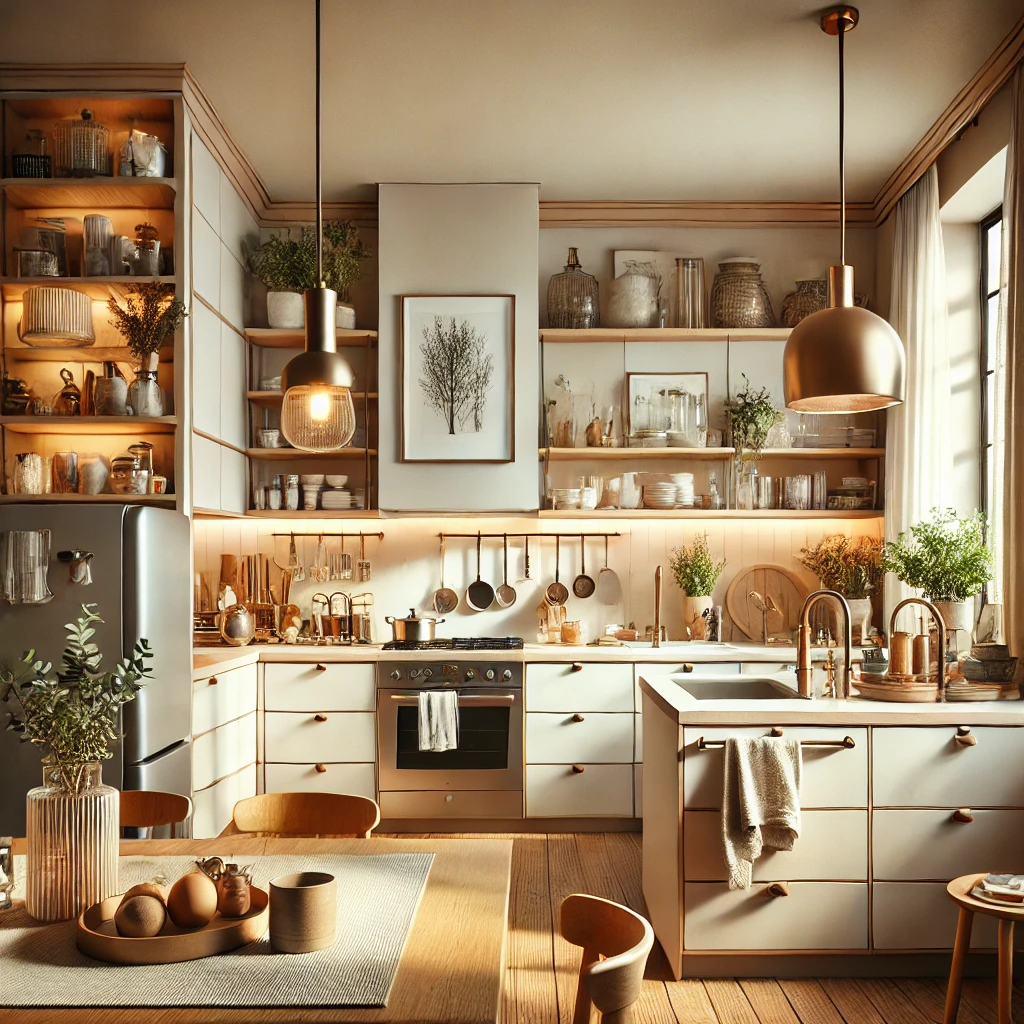
Your kitchen is the heart of your home, but certain kitchen interior design mistakes can make it less functional, cluttered, or even outdated. Whether you’re designing a new kitchen or giving your existing one a refresh, avoiding these common pitfalls will help you create a space that’s stylish, practical, and inviting. Let’s dive into 10 kitchen interior mistakes you might be making and how to fix them!
1. Ignoring Proper Lighting
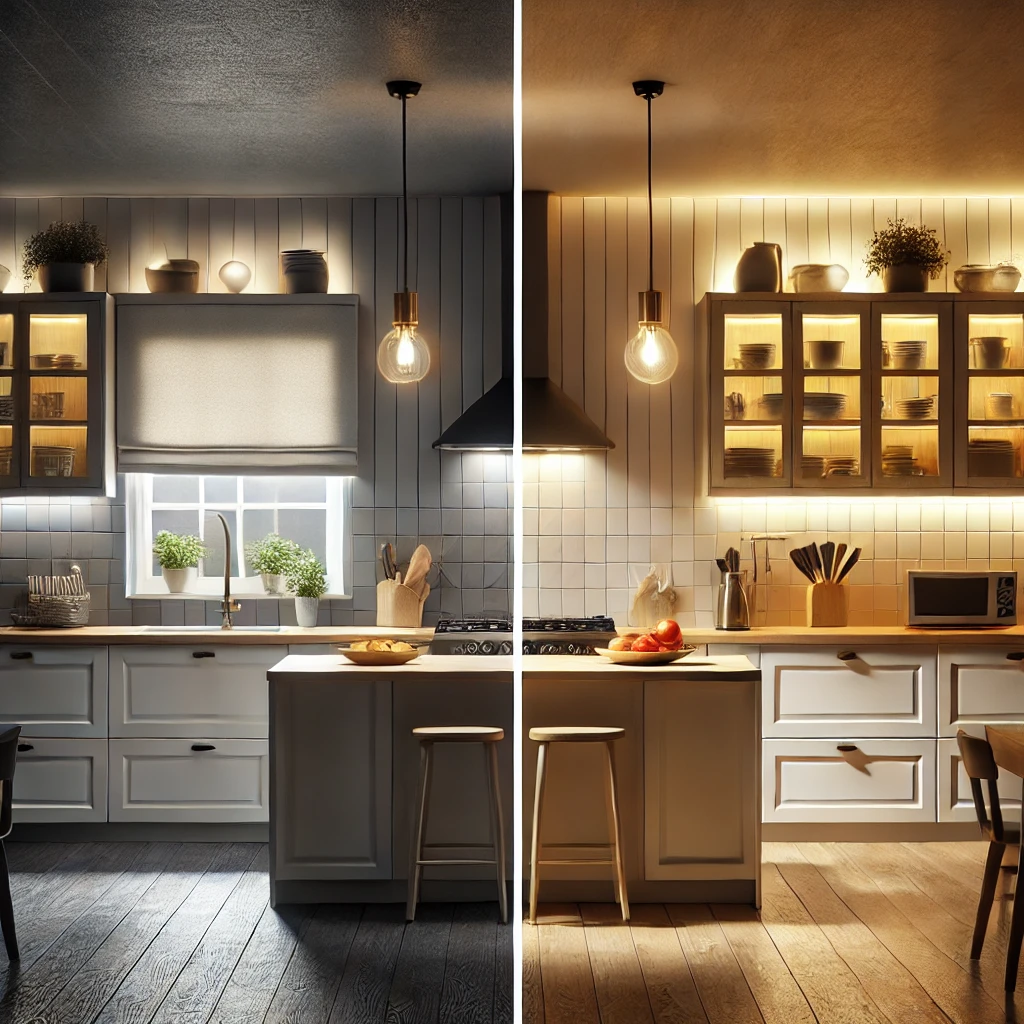
The Mistake:
Many homeowners rely only on overhead lighting, which creates harsh shadows and uneven illumination. Poor lighting can make food prep difficult and diminish the ambiance of the kitchen. Without proper lighting, it can also be harder to clean effectively, increasing the risk of missed spills and stains.
The Fix:
Incorporate layered lighting to ensure the entire kitchen is well-lit and functional. This includes:
- Ambient lighting: The main source of illumination, typically ceiling-mounted lights like chandeliers or flush-mount fixtures.
- Task lighting: Direct lighting focused on work areas such as countertops, islands, and cooking zones.
- Accent lighting: Decorative lighting that enhances the style and highlights architectural details.
- Under-cabinet lighting: Ideal for illuminating countertops where food preparation takes place.
- Recessed lighting: A great option to provide consistent brightness without bulky fixtures.
For maximum flexibility, consider using dimmable lights so you can switch between bright lighting for cooking and softer lighting for dining and entertaining.
Detailed Tips:
- Use LED bulbs for energy efficiency and long-lasting illumination.
- Add task lighting under cabinets to illuminate prep areas and reduce eye strain while chopping and cooking.
- Consider smart lighting that can be controlled via mobile apps or voice commands for convenience and automation.
- Use warm lighting tones to create a welcoming ambiance, while cool tones work best for food prep zones.
- Layer different lighting sources to prevent shadows and create a balanced aesthetic.
- Use pendant lights over an island or dining area to add both function and style to the space.
- Choose motion-sensor lighting for pantry and cabinet areas to increase efficiency and ease of use.
Common Mistakes to Avoid:
- Installing only recessed lighting, which can create unwanted shadows in workspaces.
- Choosing fixtures that are too small, which may not provide adequate brightness.
- Not installing dimmer switches, which can make lighting too harsh or inflexible.
- Neglecting under-cabinet lighting, which is essential for food prep areas.
Recommended Products:
2. Lack of Storage Solutions
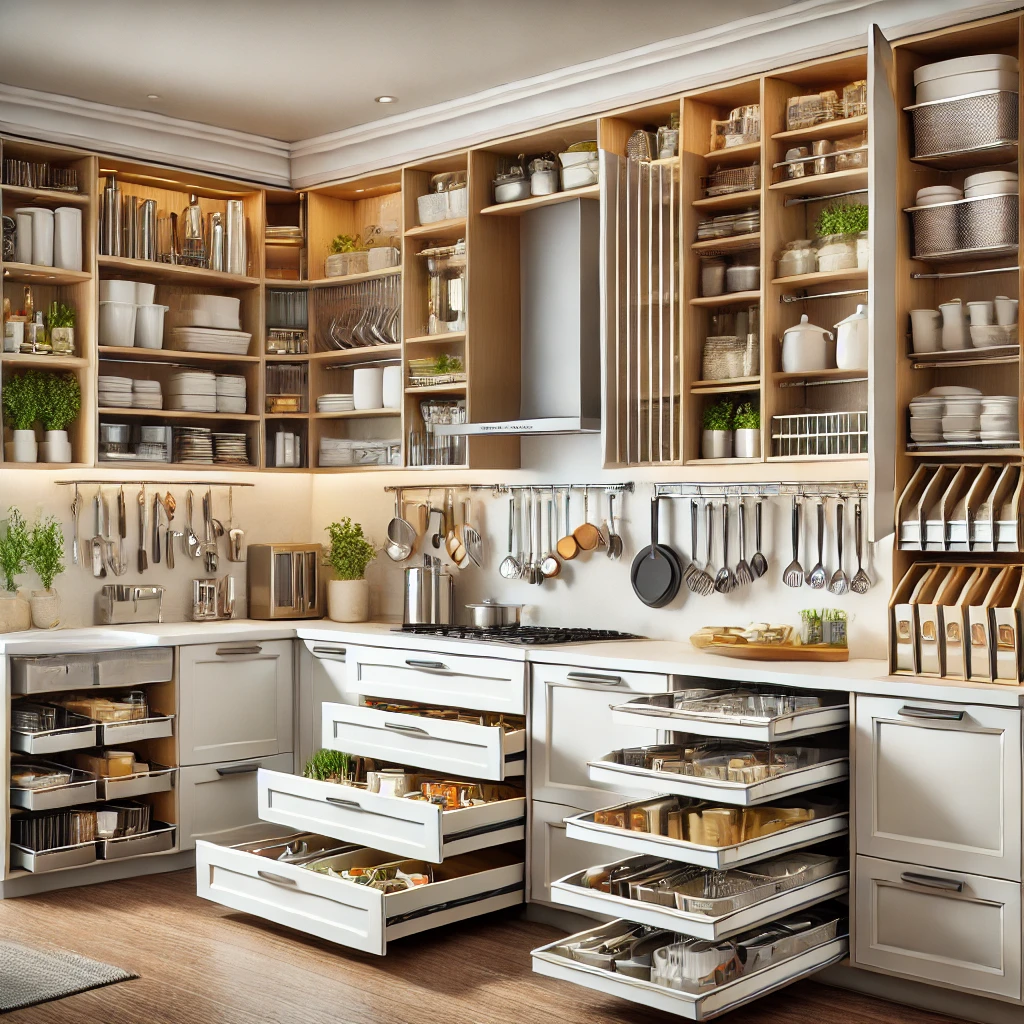
The Mistake:
Cluttered countertops and disorganized cabinets make the kitchen less functional, leading to frustration when preparing meals. Poor storage planning results in wasted space and difficulty finding essentials when you need them most.
The Fix:
Maximize storage with smart organization solutions:
- Pull-out drawers: Easier access to pots, pans, and pantry staples.
- Hanging racks: Utilize wall space for pots, pans, and utensils.
- Multi-tiered organizers: Make better use of deep cabinets and pantry shelves.
- Vertical storage: Use taller cabinets and stackable bins to store more in a small footprint.
- Lazy Susans: Ideal for corner cabinets to keep items within easy reach.
- Magnetic strips: Free up drawer space by mounting knives and metal tools on walls.
- Drawer dividers: Keep cutlery and small gadgets neatly organized.
Detailed Tips:
- Use clear storage bins to easily identify ingredients and minimize food waste.
- Install corner cabinet organizers to maximize awkward spaces and avoid dead space.
- Use hanging pot racks to free up valuable cabinet space.
- Label pantry items for quick identification and to prevent duplicate purchases.
- Install tension rods inside cabinets to keep baking sheets and trays upright.
- Use under-sink organizers to neatly store cleaning supplies.
- Opt for foldable or stackable containers to save space when not in use.
- Consider a rolling cart that can double as extra prep space and mobile storage.
Common Mistakes to Avoid:
- Overstuffing cabinets: This can make it difficult to retrieve items quickly.
- Neglecting vertical space: Adding stackable shelves and hooks can maximize unused areas.
- Failing to organize pantry essentials: Using labeled bins or canisters keeps everything tidy.
- Keeping too many unused gadgets: Declutter and donate appliances that you rarely use.
Recommended Products:
- Expandable Drawer Organizers
- Over-the-Door Pantry Racks
- Stackable Storage Bins
- Lazy Susan Cabinet Organizer
- Rolling Kitchen Cart
3. Choosing the Wrong Paint Color
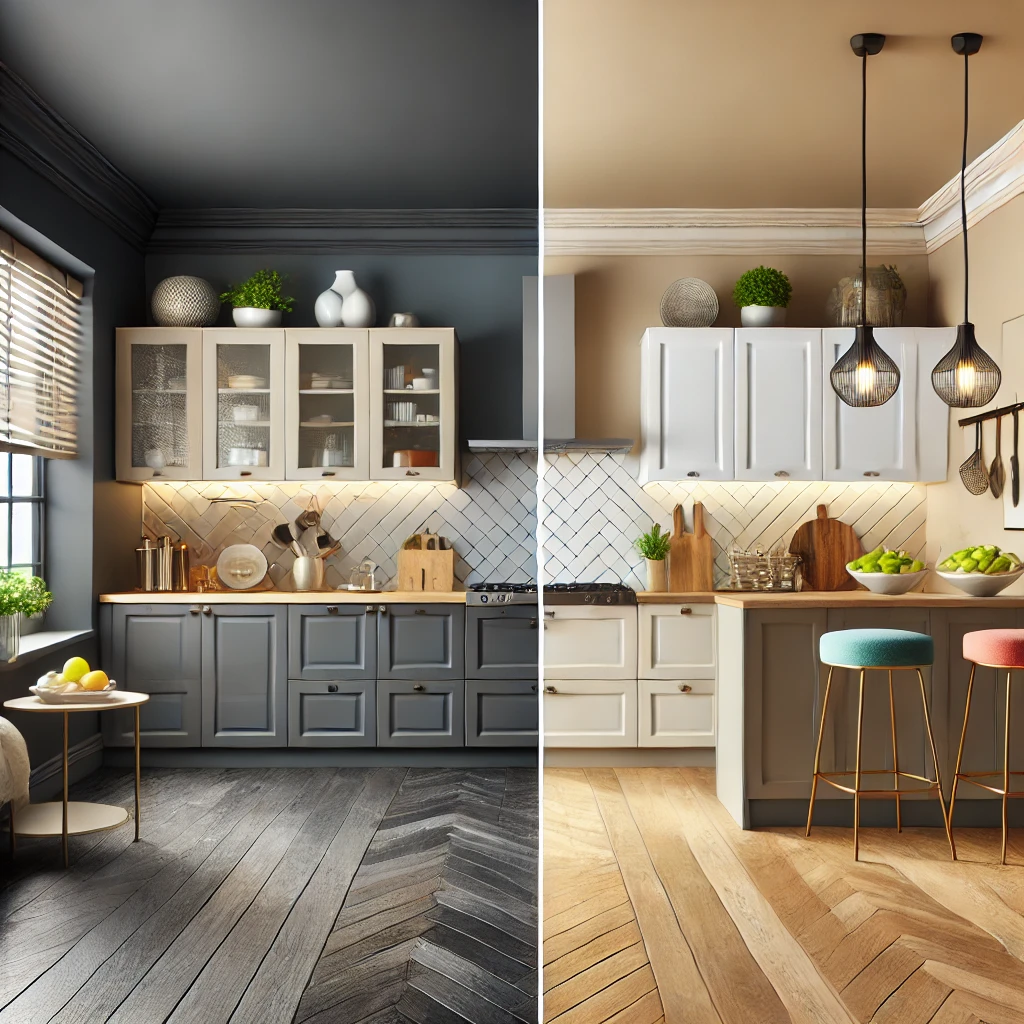
The Mistake:
Dark or overly bright colors can make the kitchen feel too small, overwhelming, or outdated. The wrong color choice can also impact how lighting interacts with the space, making it appear either too dim or too stark. Bold or trendy colors may seem appealing at first but can quickly go out of style, requiring frequent repaints.
The Fix:
Opt for neutral or soft tones like white, gray, beige, or pastels to keep the space airy and open. These colors help reflect light, making the kitchen appear larger and more inviting. If you enjoy bolder colors, introduce them through accent features such as kitchen towels, backsplash tiles, or bar stools instead of wall paint.
If you’re set on a bold paint color, consider using it on a single accent wall or on cabinets rather than the entire room. Matte and satin finishes work best for hiding imperfections, while semi-gloss or gloss is ideal for easy cleaning and durability.
Detailed Tips:
- Test paint samples on different walls at various times of the day to observe how lighting affects the color.
- Use washable paint finishes such as semi-gloss or eggshell for easy maintenance and stain resistance.
- Consider a two-tone color scheme by painting lower cabinets a darker shade and upper cabinets a lighter one to create contrast without overwhelming the space.
- Balance bold colors with neutral countertops, cabinets, or flooring to maintain a cohesive design.
- Use a peel-and-stick wallpaper as an alternative to paint if you like changing styles frequently.
- Incorporate natural light to enhance the color vibrancy and avoid colors appearing too muted or overly intense.
- Coordinate paint colors with the kitchen backsplash and flooring to ensure a harmonious look.
Common Mistakes to Avoid:
- Choosing overly dark colors in small kitchens, which can make the space feel confined.
- Selecting ultra-bright colors that can be too stimulating and clash with other elements.
- Ignoring the undertones of paint colors, which can create an unintentional contrast with existing decor.
- Skipping a primer when using bold or dark colors, leading to uneven coverage.
- Overlooking natural and artificial lighting that may alter the way a color looks throughout the day.
Recommended Products:
- Popular Kitchen Paint Colors
- Peel-and-Stick Backsplash Tiles
- Washable Semi-Gloss Paint
- Self-Adhesive Accent Wall Decals
4. Overlooking Countertop Space
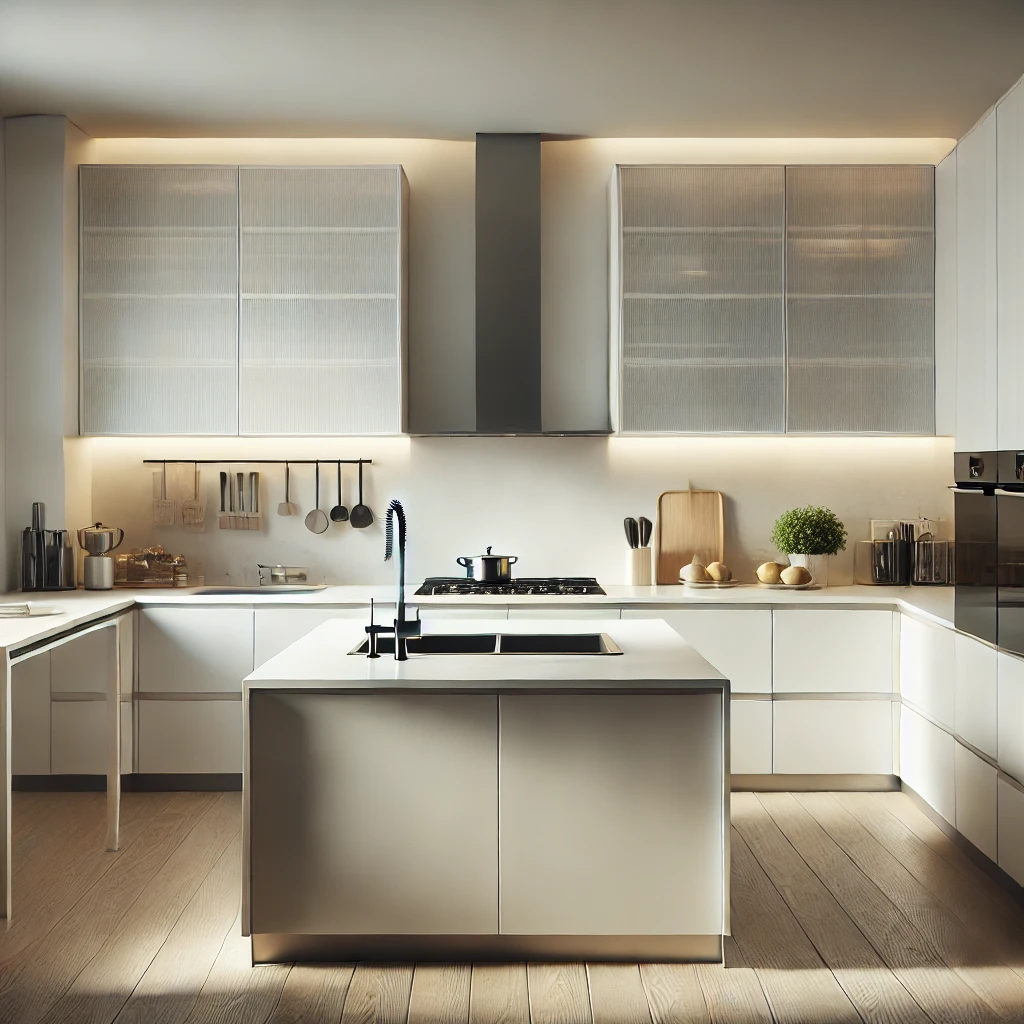
The Mistake:
Too many appliances and decorations leave little workspace for cooking and meal prep. Crowded countertops can make the kitchen feel cluttered and overwhelming, reducing efficiency when preparing meals. A lack of counter space can also lead to unnecessary frustration when trying to multitask in the kitchen.
The Fix:
Only keep essential appliances on the counter and store the rest in cabinets or a pantry. Utilize smart storage solutions like wall-mounted racks, rolling carts, and hidden pull-out surfaces to maximize counter space while maintaining functionality.
Consider incorporating customized countertop extensions for small kitchens, such as fold-down counters or over-the-sink cutting boards, to create additional prep areas without taking up permanent space.
Detailed Tips:
- Invest in multi-purpose appliances to save space (e.g., an air fryer that also functions as a toaster and convection oven).
- Use foldable or extendable countertops if you have limited space to provide extra workspace when needed.
- Install a pull-out cutting board for additional prep area that can be tucked away when not in use.
- Keep only daily-use appliances accessible and store rarely used items in cabinets or a pantry.
- Utilize vertical space by installing hanging racks for pots, pans, and utensils.
- Use a kitchen island with built-in storage to keep essentials within reach while maintaining an open workspace.
- Consider under-counter storage solutions like pull-out drawers for small kitchen appliances.
- Opt for nesting kitchen tools like stackable mixing bowls and measuring cups to reduce clutter.
- Use corner countertop areas for decorative yet functional storage, such as a coffee station or spice rack.
- Adopt the “one in, one out” rule to prevent counter clutter from accumulating over time.
Common Mistakes to Avoid:
- Keeping all appliances out: This makes the kitchen look messy and reduces workspace efficiency.
- Not utilizing vertical storage: Floating shelves and hooks can help free up counter space.
- Using large decorative items: Opt for minimal or wall-mounted decor to maximize functional counter space.
- Ignoring multipurpose furniture: A rolling cart can serve as a prep station and storage unit simultaneously.
- Failing to declutter regularly: Unused items should be stored away or donated to maintain an organized space.
Recommended Products:
- Rolling Kitchen Cart
- Wall-Mounted Storage Racks
- Expandable Over-the-Sink Cutting Board
- Hanging Pot and Utensil Rack
- Pull-Out Pantry Organizer
5. Mismatched Hardware & Fixtures
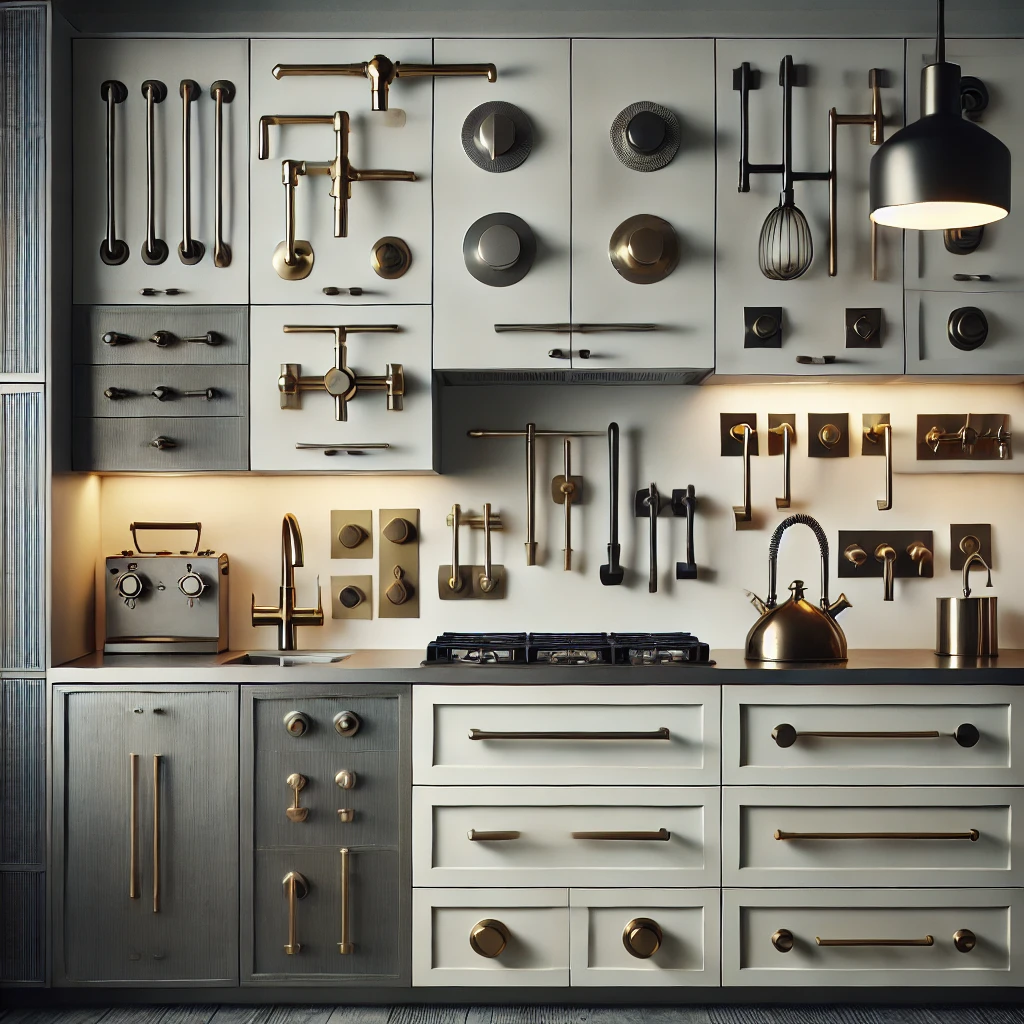
The Mistake:
Clashing metals and outdated hardware make the kitchen look inconsistent and unpolished. Choosing the wrong finishes for cabinet handles, faucets, and light fixtures can disrupt the overall aesthetic and create visual dissonance.
The Fix:
Stick to one or two finishes (brushed nickel, matte black, brass) for cabinet handles, faucets, and light fixtures. Ensure consistency across all metal elements in your kitchen to create a seamless, modern look. Updating your cabinet hardware is a cost-effective way to refresh the entire space without a full renovation.
Detailed Tips:
- Opt for soft-close hinges to elevate the feel of your cabinetry and enhance durability.
- Swap out old drawer pulls for sleek, modern designs that complement your kitchen style.
- Match your metal finishes across faucets, cabinet handles, and lighting for a cohesive look.
- Experiment with contrast: If you have dark cabinetry, opt for lighter hardware finishes and vice versa.
- Use a statement light fixture to anchor the design while keeping smaller hardware elements consistent.
- Consider swapping outdated sink faucets for touchless or pull-down options for added convenience.
Common Mistakes to Avoid:
- Mixing too many metal finishes, which can make the kitchen look cluttered.
- Choosing trendy finishes that may go out of style quickly.
- Neglecting functionality, such as selecting cabinet pulls that are difficult to grip.
Recommended Products:
6. Poor Ventilation
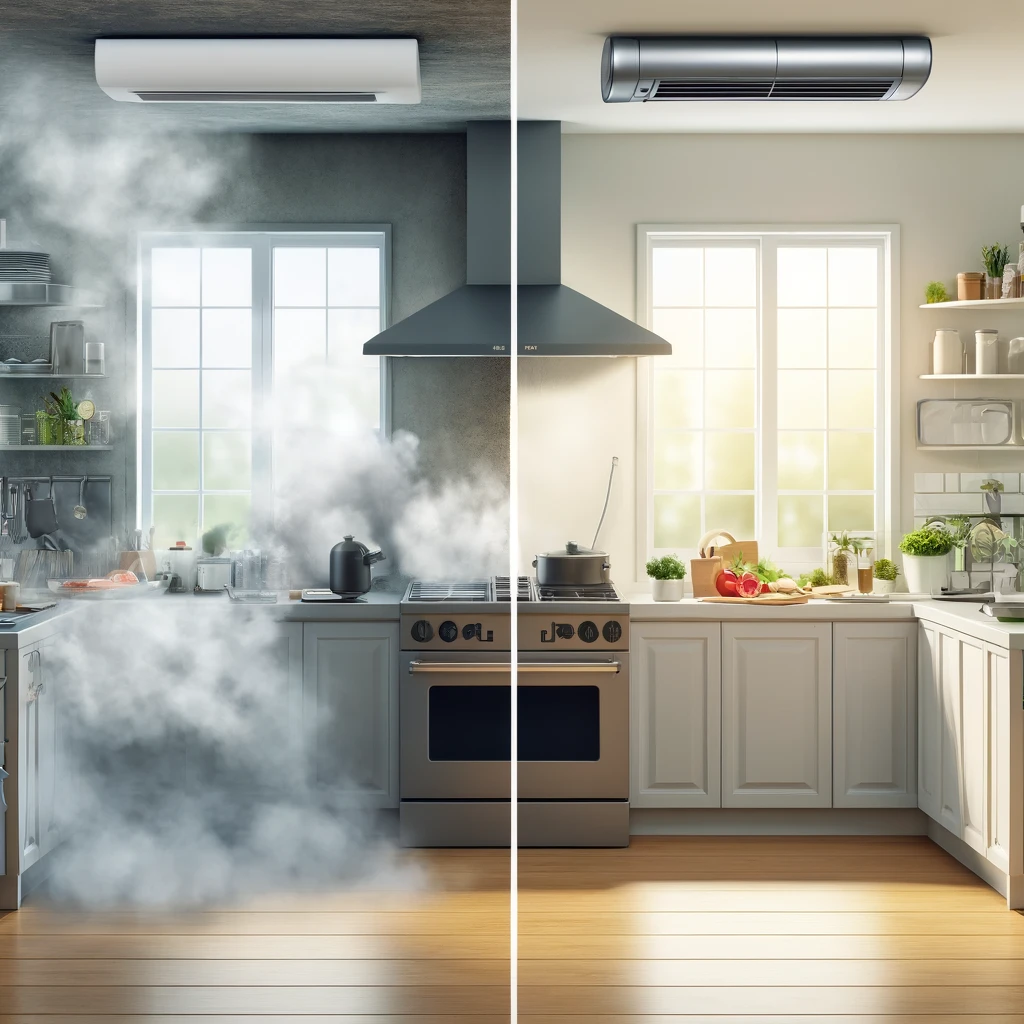
The Mistake:
Lack of ventilation leads to lingering cooking odors, excess moisture, and poor air quality. A kitchen without proper ventilation can also contribute to grease buildup on surfaces and increased humidity, which may encourage mold growth.
The Fix:
Use range hoods or exhaust fans to improve airflow. Open windows when cooking to let fresh air circulate. Consider an air purifier to help eliminate odors and maintain a fresh kitchen environment. A properly ventilated kitchen also helps prevent long-term damage to cabinets and walls from steam and grease exposure.
Detailed Tips:
- Clean range hood filters regularly to maintain efficiency and reduce airborne grease.
- Install a high-powered range hood to effectively remove smoke and odors.
- Use activated charcoal filters in ductless range hoods for better air purification.
- Boil vinegar and water to help neutralize stubborn cooking smells.
- Consider a ceiling fan in larger kitchens to help improve overall airflow.
- Add an indoor plant like aloe vera or a peace lily to help filter indoor air naturally.
Common Mistakes to Avoid:
- Skipping regular maintenance on range hood filters, leading to reduced performance.
- Not using exhaust fans when cooking, which allows odors and moisture to linger.
- Choosing an underpowered range hood, which may not effectively ventilate larger kitchens.
Recommended Products:
7. Underestimating Seating Space
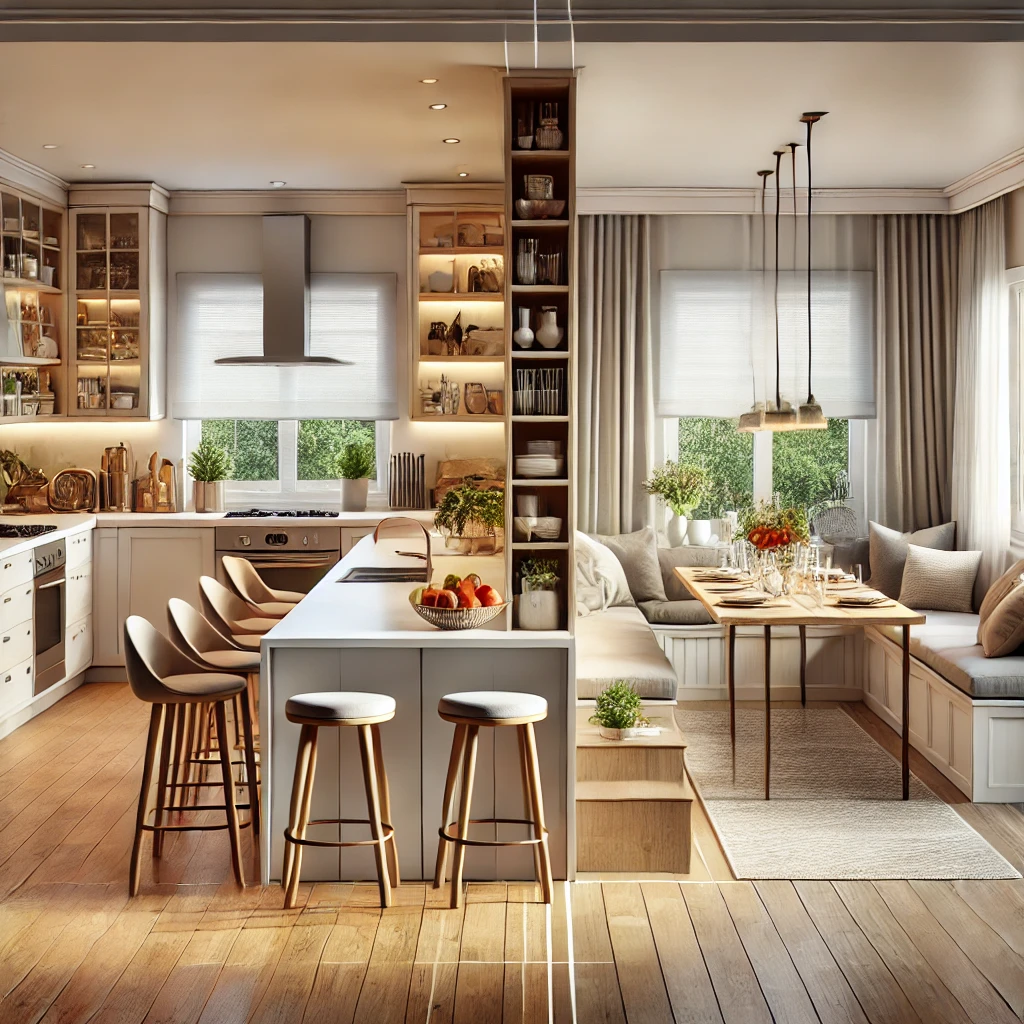
The Mistake:
Not having enough comfortable seating for family and guests can make the kitchen feel unwelcoming. Inadequate seating can also reduce the functionality of the kitchen as a social space, making it less inviting for casual meals or entertaining.
The Fix:
Incorporate versatile seating options that optimize both space and comfort. Bar stools at an island, a breakfast nook, or multi-purpose benches with storage can enhance seating availability without overcrowding the space.
Consider installing built-in banquet seating along a wall to maximize seating capacity in smaller kitchens. For larger kitchens, an expandable dining table can accommodate both daily meals and larger gatherings.
Detailed Tips:
- Choose ergonomic bar stools with backrests for added comfort during extended seating.
- Use stackable or foldable chairs that can be stored when not in use to save space.
- Add cushioned bench seating for extra comfort while incorporating storage underneath.
- Consider an extendable kitchen table that can adjust based on the number of guests.
- Ensure proper spacing between stools and chairs to allow for comfortable movement.
- Opt for multi-functional furniture, like a dining table that doubles as a work area.
Common Mistakes to Avoid:
- Choosing stools that are too tall or too short, leading to discomfort.
- Not accounting for enough clearance between seating and countertops.
- Overcrowding the kitchen with bulky chairs, reducing movement space.
- Neglecting aesthetics, making the seating look out of place in the kitchen decor.
Recommended Products:
8. Not Enough Electrical Outlets
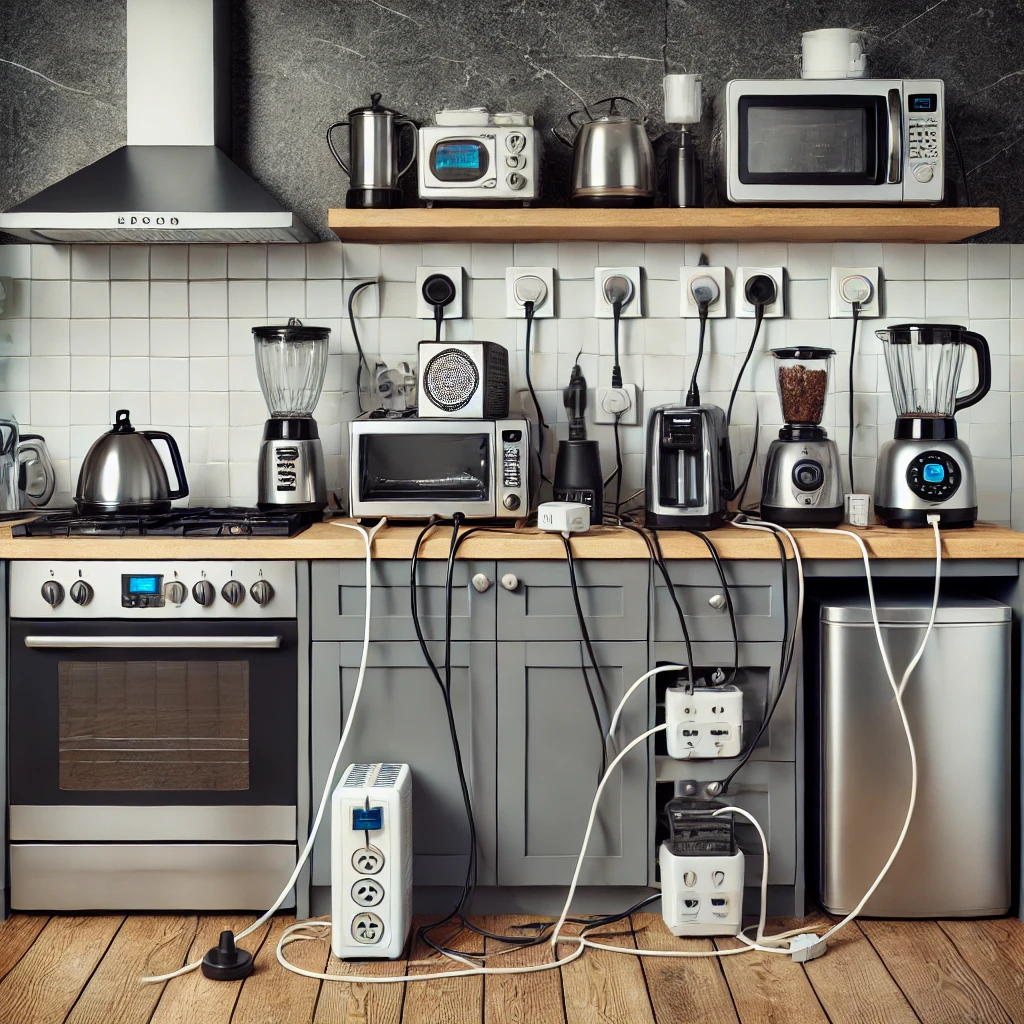
The Mistake:
A lack of electrical outlets can make it difficult to use multiple appliances at once, leading to frustration when cooking or preparing meals. Insufficient outlets can also result in dangerous power cord clutter and the overuse of extension cords.
The Fix:
Plan for strategically placed electrical outlets that cater to high-traffic areas. Install outlets near prep areas, islands, and inside cabinets for easy access to small appliances. Consider USB-integrated outlets for charging devices without cluttering countertops with bulky adapters.
For older kitchens, hire an electrician to add pop-up outlets on countertops or under cabinets to provide additional power sources without disrupting aesthetics.
Detailed Tips:
- Install pop-up outlets in kitchen islands for convenient access.
- Use under-cabinet power strips to keep countertops clean and organized.
- Add USB-compatible outlets to reduce the need for charging adapters.
- Ensure outlets are GFCI-protected to prevent electrical hazards in moisture-prone areas.
- Plan outlet placement near commonly used appliances to minimize cord clutter.
- Use smart power strips to manage energy consumption and prevent overloading circuits.
Common Mistakes to Avoid:
- Overloading single outlets, which can cause circuit trips.
- Placing outlets too far from workstations, leading to unnecessary cord stretching.
- Skipping GFCI outlets, increasing electrical hazard risks.
- Underestimating the number of outlets needed, requiring excessive use of extension cords.
Recommended Products:
9. Ignoring Flooring Choices
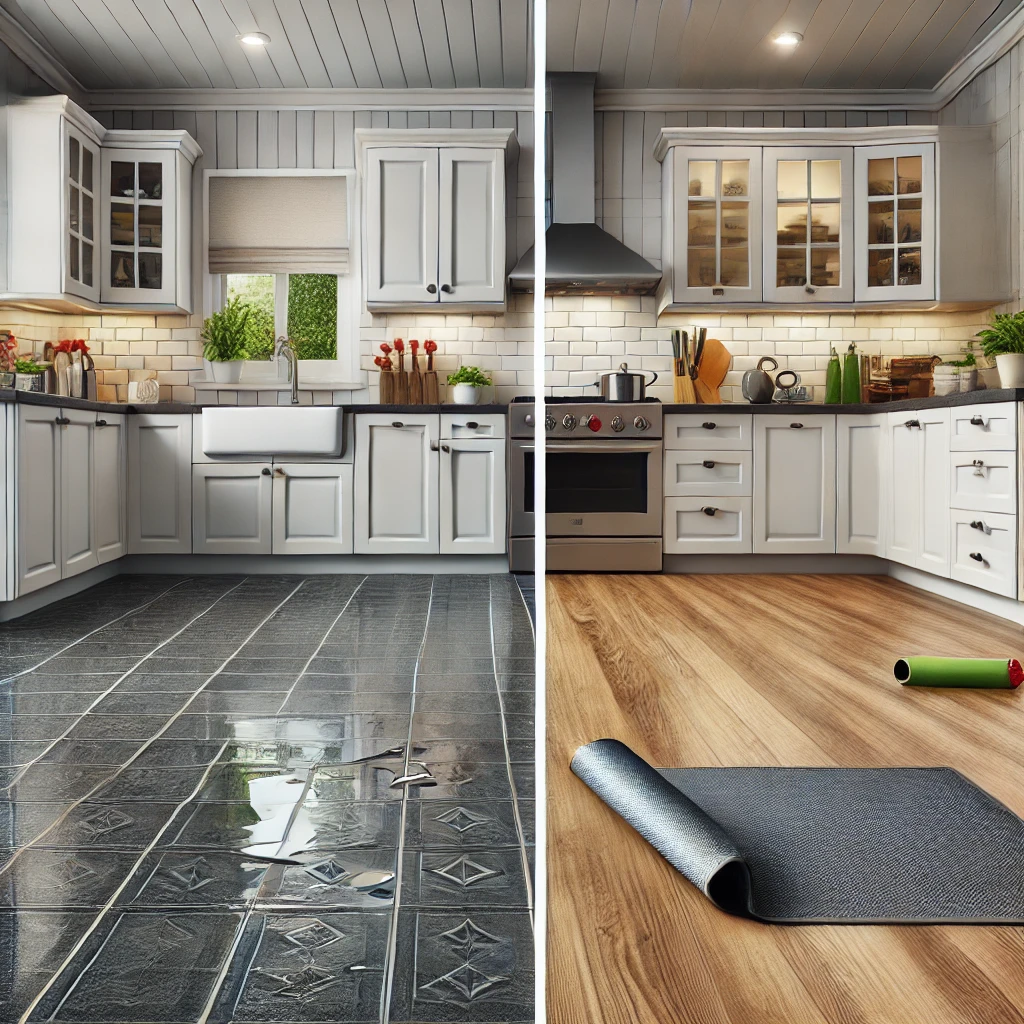
The Mistake:
Choosing the wrong flooring can lead to high maintenance, safety hazards, and a lack of durability. Some materials, like untreated wood or porous stone, can absorb spills and stains, while others may be too slippery or difficult to clean. Flooring that doesn’t match the overall kitchen aesthetic can also make the space feel disjointed.
The Fix:
Opt for water-resistant, easy-to-maintain materials such as vinyl, tile, or engineered hardwood. These options provide durability and are easier to clean, making them ideal for high-traffic kitchens. If comfort is a concern, consider using anti-fatigue mats in areas where you stand for long periods, such as in front of the sink or stove.
Detailed Tips:
- Choose slip-resistant flooring to prevent accidents, especially in homes with children or elderly residents.
- Use washable kitchen rugs in high-traffic zones for added comfort and protection.
- Consider waterproof vinyl flooring for durability and easy maintenance.
- Avoid high-maintenance materials like untreated hardwood that requires frequent sealing.
- Select flooring that complements your cabinets and countertops to create a cohesive look.
- Install radiant heating under tile floors for added warmth and comfort in colder climates.
Common Mistakes to Avoid:
- Using carpet in the kitchen, which absorbs spills and odors.
- Choosing glossy or overly smooth tiles, which can become dangerously slippery.
- Installing dark-colored floors in small kitchens, which can make the space feel more cramped.
- Skipping a proper sealant on natural stone floors, leading to water damage and stains.
Recommended Products:
10. Forgetting Personal Touches
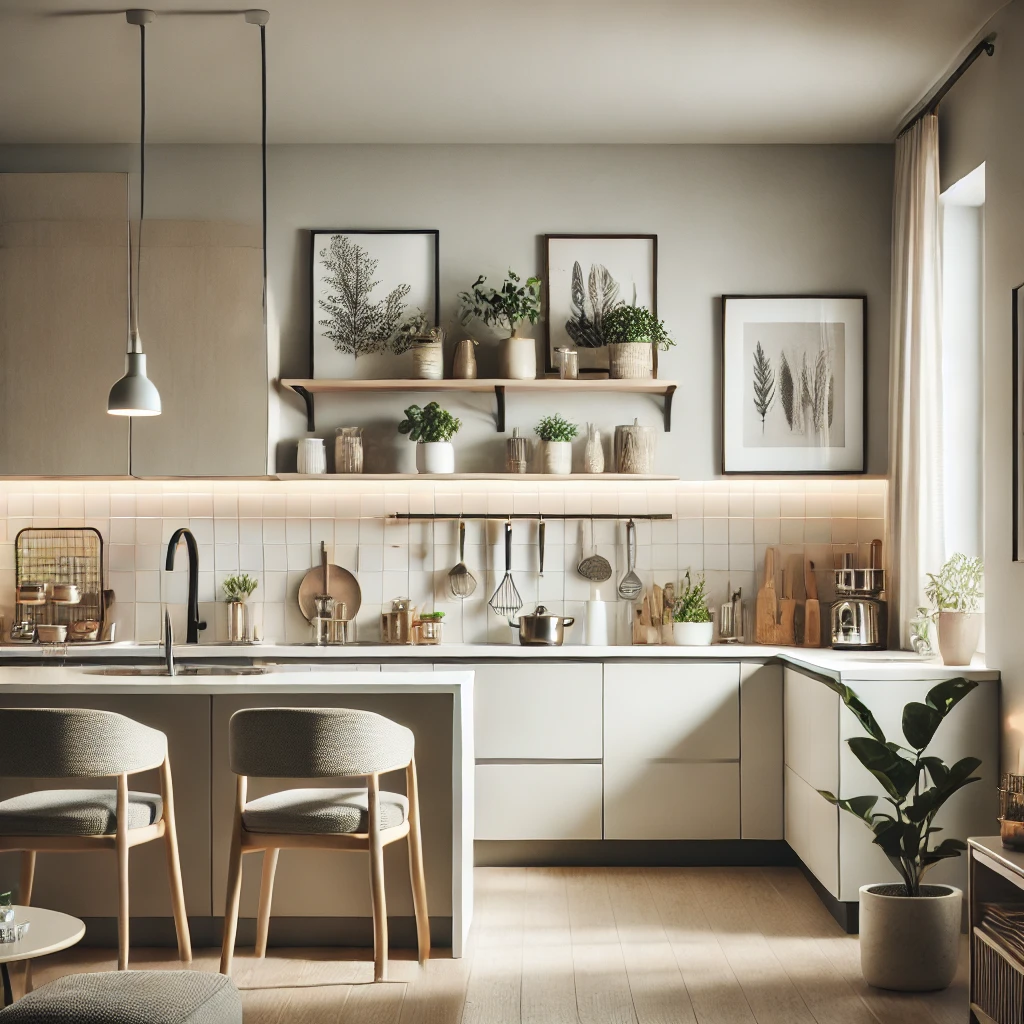
The Mistake:
A kitchen that lacks personality can feel cold, uninspiring, and overly sterile. While functionality is essential, an overly minimalist approach can leave the space feeling uninviting and devoid of warmth.
The Fix:
Incorporate decor and accessories that reflect your personality while keeping the kitchen functional. Adding framed artwork, decorative dishes, plants, or a stylish backsplash can enhance the space without overwhelming it. Consider using open shelving to display your favorite kitchenware while keeping it organized.
Detailed Tips:
- Add greenery with small indoor herb gardens to bring life and freshness to the space.
- Use stylish dishware as decor on open shelves or glass-front cabinets.
- Hang artwork or framed quotes that complement your kitchen’s aesthetic.
- Incorporate a bold backsplash as a focal point while keeping surrounding elements neutral.
- Use colorful accents like hand towels, rugs, or bar stools to inject warmth and personality.
- Invest in unique light fixtures to serve as both functional and decorative pieces.
- Swap out cabinet knobs and handles for custom, statement-making designs.
Common Mistakes to Avoid:
- Over-decorating, which can make the kitchen look cluttered rather than stylish.
- Using too many competing colors, creating visual chaos.
- Ignoring seasonal decor opportunities, such as rotating in festive pieces.
- Not blending decor with function, making the space feel impractical.
Recommended Products:
Final Thoughts
Avoiding these common kitchen design mistakes will make your space more functional, stylish, and enjoyable. Whether you’re making small tweaks or planning a full kitchen makeover, investing in the right decor and organization tools will transform your space.
💡 Love these ideas? Pin this post to your Pinterest board for future reference! 📌
What mistake have you made in your kitchen design? Share in the comments below!
Other Articles:
A Comprehensive Review of the Best Portable Dishwasher on the Market
Why You Should Consider Food Grade Mineral Oil in Your Kitchen
As an Amazon Associate, I earn from qualifying purchases.










![Country Chic Paint - Chalk Style All-in-One Paint for Furniture, Home Decor, Cabinets, Crafts, Eco-Friendly, Matte Paint - Sage Advice [sage Green] Half Pint 8oz](https://m.media-amazon.com/images/I/31eklO77arL._SL500_.jpg)



































